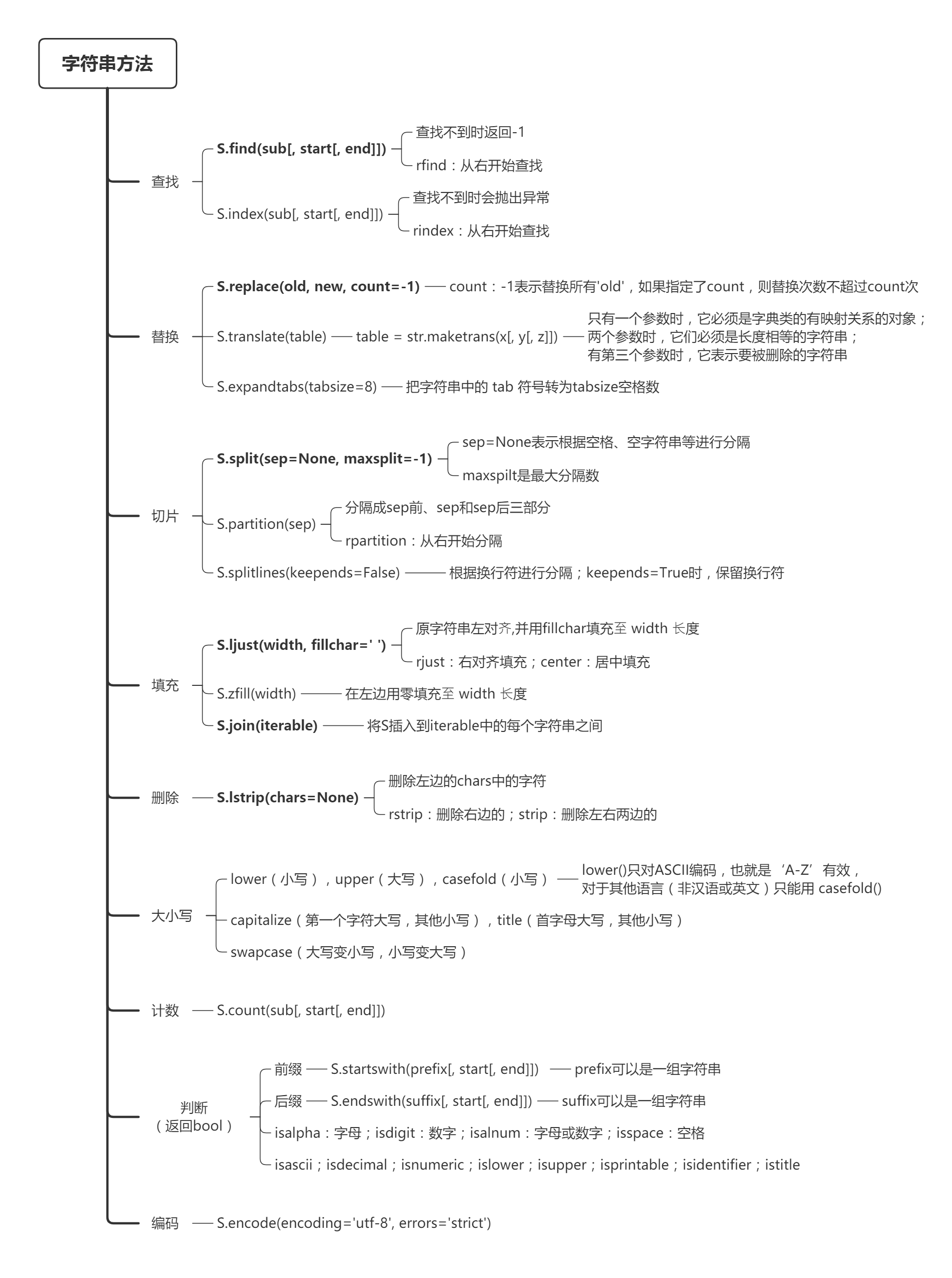1. 方法

注:isdigit、isdecimal和isnumeric的区别可以参考:https://www.runoob.com/python/att-string-isnumeric.html
2. 例子
(1)查找
1 >>> s = 'hello worLd'
2 >>> s.find('l')
3 2
4 >>> s.index('l')
5 2
6 >>> s.find('a')
7 -1
8 >>> s.index('a')
9 Traceback (most recent call last):
10 File "<pyshell#4>", line 1, in <module>
11 s.index('a')
12 ValueError: substring not found
13 >>> s.find('l',6) # 不考虑大小写
14 -1
(2)替换
1 >>> s = 'hello worLd'
2 >>> s.replace('l','*') # 考虑大小写
3 'he**o worLd'
4 >>> table = str.maketrans('l','*')
5 >>> s.translate(table)
6 'he**o worLd'
(3)切片
1 >>> s = 'hello\nworld\nhello\nBunny'
2 >>> s.split('\n')
3 ['hello', 'world', 'hello', 'Bunny']
4 >>> s.partition('\n')
5 ('hello', '\n', 'world\nhello\nBunny')
6 >>> s.splitlines()
7 ['hello', 'world', 'hello', 'Bunny']
(4)填充
1 >>> s = 'hello world'
2 >>> s.ljust(20,'0')
3 'hello world000000000'
4 >>> s.zfill(20)
5 '000000000hello world'
1 >>> s = 'hello\nworld\nhello\nBunny'
2 >>> ','.join(s.splitlines())
3 'hello,world,hello,Bunny'
(5)删除
1 >>> s = '\thello world \n'
2 >>> s.strip()
3 'hello world'
(6)大小写
1 >>> s = 'HEllo worLd'
2 >>> s.lower()
3 'hello world'
4 >>> s.upper()
5 'HELLO WORLD'
6 >>> s.capitalize()
7 'Hello world'
8 >>> s.title()
9 'Hello World'
10 >>> s.swapcase()
11 'heLLO WORlD'
(7)计数
1 >>> s = 'hello worLd'
2 >>> s.count('l') # 考虑大小写
3 2
(8)判断
1 >>> num1 = 'Ⅳ'
2 >>> num1.isdigit()
3 False
4 >>> num1.isdecimal()
5 False
6 >>> num1.isnumeric()
7 True
8 >>> num2 = '万'
9 >>> num2.isdigit()
10 False
11 >>> num2.isdecimal()
12 False
13 >>> num2.isnumeric()
14 True